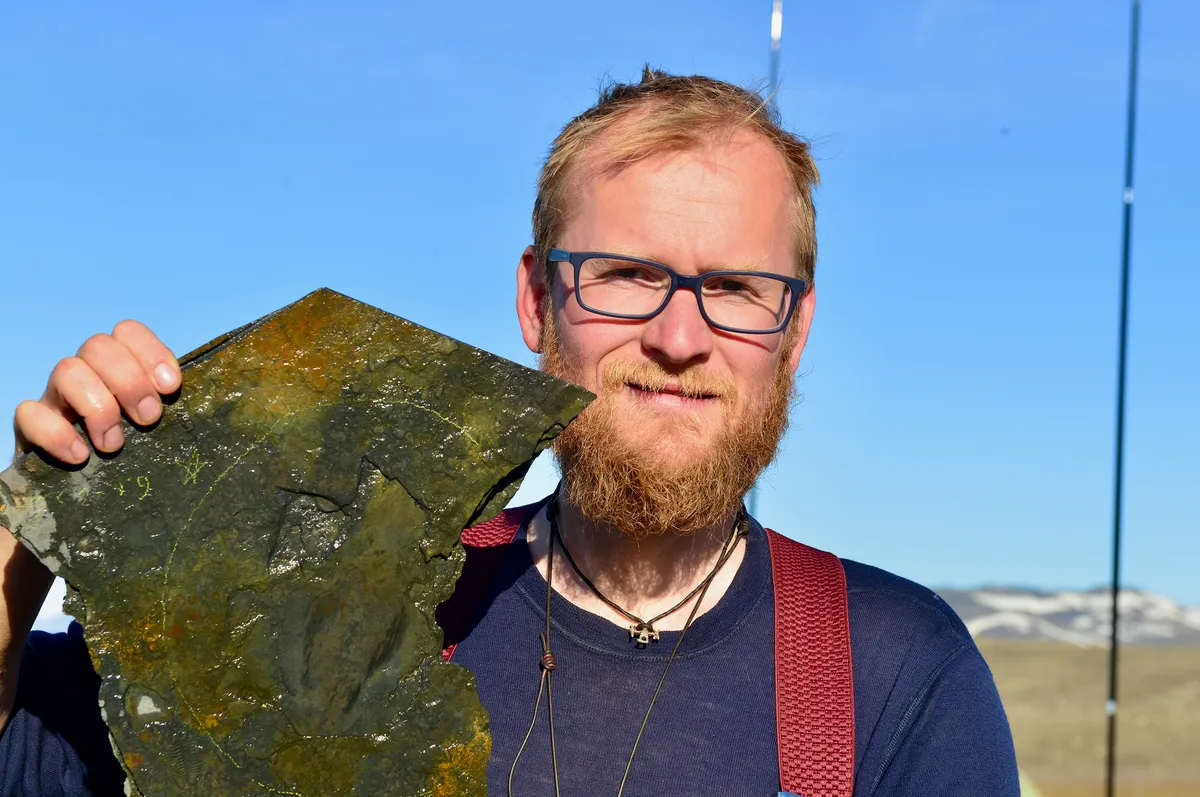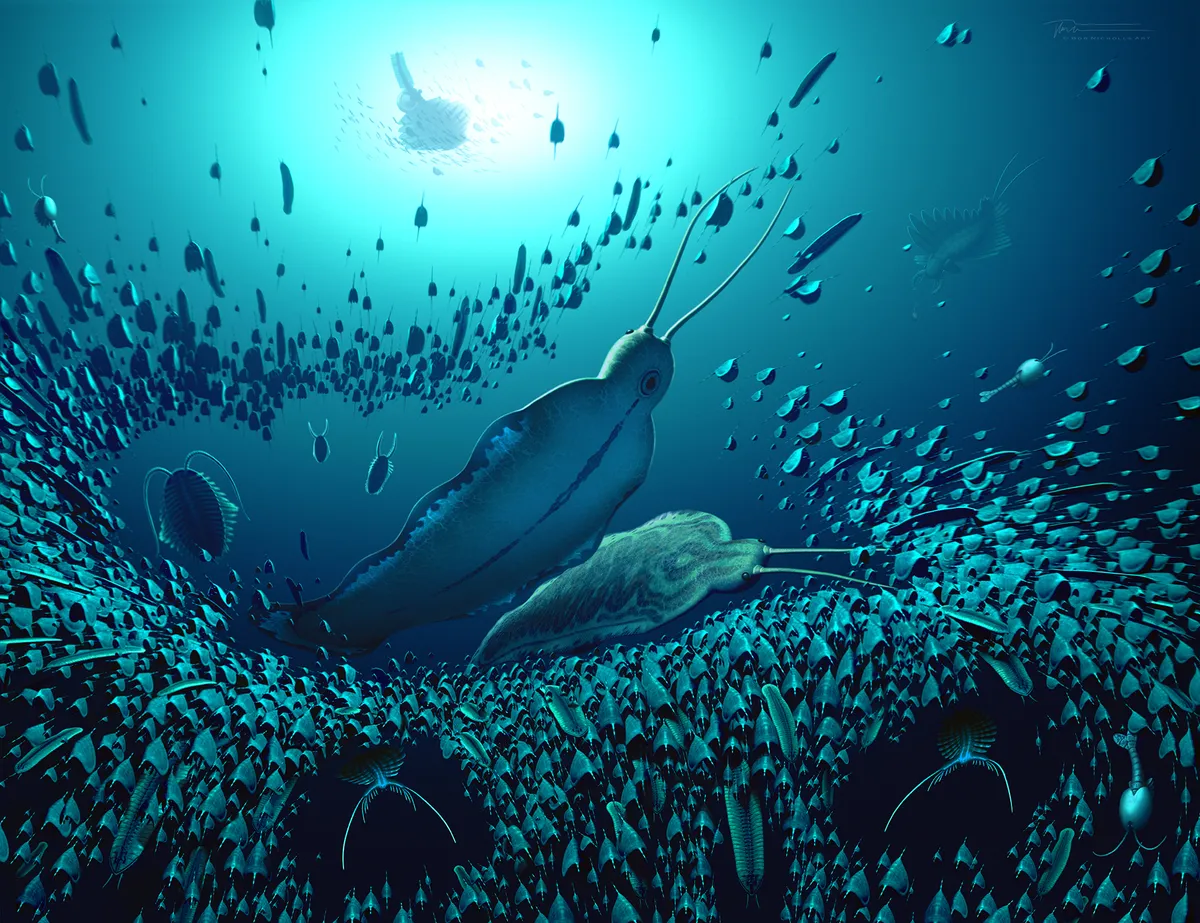Scientists have discovered the fossils of a new group of predatory worms in North Greenland more than half a billion years old that are totally new to science.
The large worms may be among the earliest carnivorous animals to have colonised ancient seas revealing a past dynasty of predators that scientists didn’t know existed.
Named Timorebestia, meaning ‘terror beasts’ in Latin, the worms had fins down the sides of their body, a distinct head with long antennae, massive jaw structures inside their mouth and grew to more than 30cm in length, making them some of the largest swimming animals at the time.
- Scientists are a step closer to bringing the dodo back from extinction. And it may save existing wildlife on Mauritius
- What killed the dinosaurs? It may not have been a meteorite that delivered the deadly blow, say scientists
- Why did dinosaurs get so big?
“Timorebestia were giants of their day and would have been close to the top of the food chain,” says Dr Jakob Vinther from the University of Bristol's Schools of Earth Sciences and one of the scientists involved in the study.
“That makes it equivalent in importance to some of the top carnivores in modern oceans, such as sharks and seals back in the Cambrian period (500 million years ago).”

The scientists have established that the newly discovered worm is a distant relative of arrow worms that are still found in oceans which feed on microscopic zooplankton.
However today's arrow worms are mere tiddlers compared to their relatively gigantic ancestors as they range in size from just two to 120 millimetres.
“Our research shows that these ancient ocean ecosystems were fairly complex with a food chain that allowed for several tiers of predators,” adds Dr Vinther.
Thanks to the exceptional level of preservation in the fossils, the scientists were able to analyse the fossilised digestive system of the worms.
Remarkably the scientists were able to detect remains of what was once a common, swimming arthropod called Isoxys.

“We can see that these arthropods were a food source many other animals,” says Morten Lunde Nielsen, a former PhD student at Bristol University and part of the research team.
Isoxys had long protective spines, pointing both forwards and backwards. However the scientists believe that these defensive adaptations were unable to prevent Timorebestia from eating Isoxys in vast numbers.
“Both arrow worms and the more primitive Timorebestia, were swimming predators,” says Dr Vinther.
“We can therefore surmise that in all likelihood they were the predators that dominated the oceans before arthropods took off. Perhaps they had a dynasty of about 10-15 million years before they got superseded by other and more successful groups.”
Main illustration credit: Bob Nicholls Art
